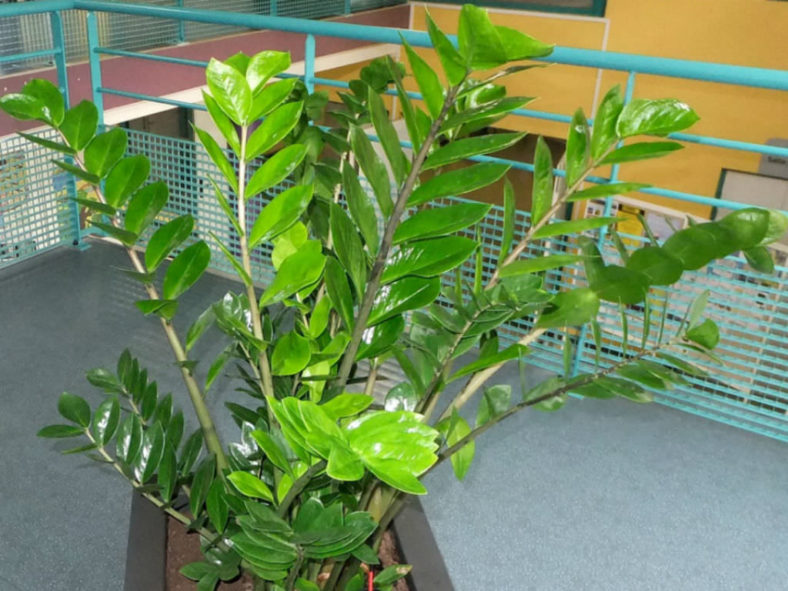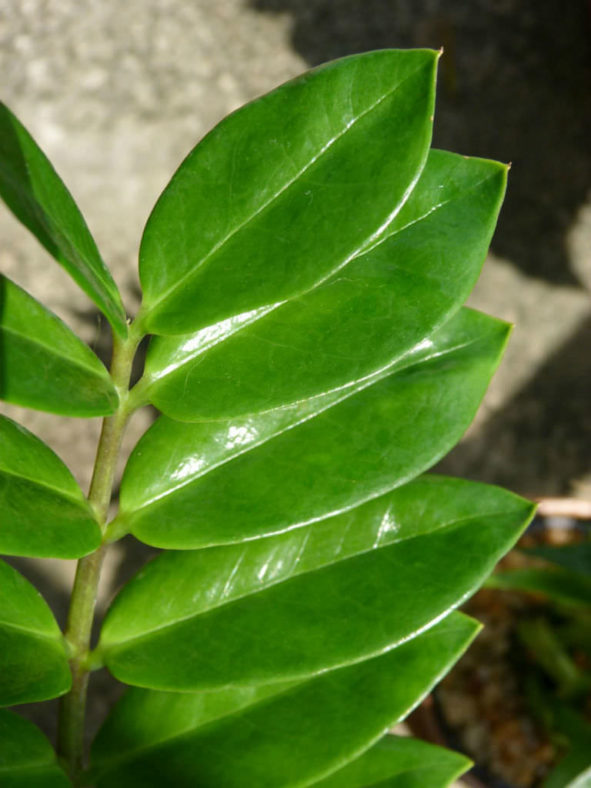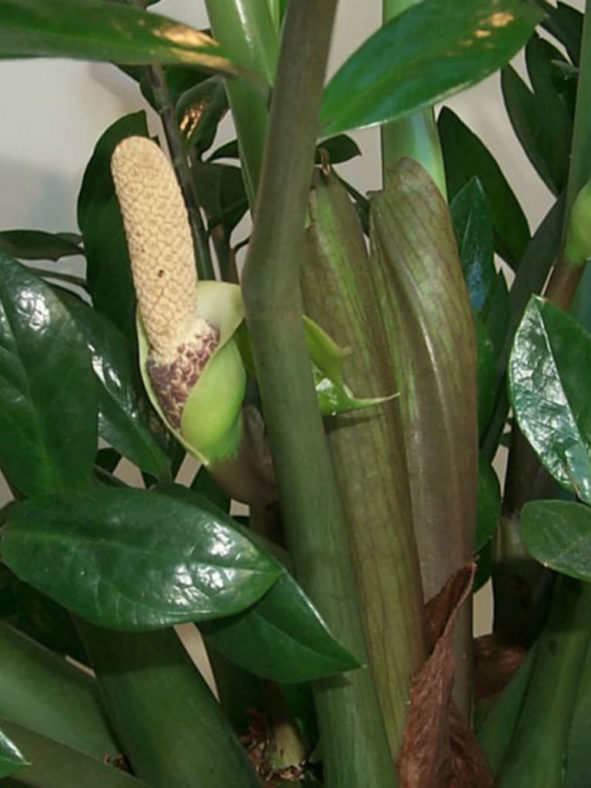Scientific Name
Zamioculcas zamiifolia (Lodd.) Engl.
Common Name(s)
Aroid Palm, Eternity Plant, Fat Boy, Golden Tree, Money Tree, Succulent Philodendron, Zanzibar Gem, Zu Zu Plant, ZZ Plant
Synonym(s)
Caladium zamiifolium, Zamioculcas lanceolata, Zamioculcas loddigesii
Scientific Classification
Family: Araceae
Subfamily: Asclepiadoideae
Tribe: Marsdenieae
Genus: Zamioculcas
Etymology
The specific epithet "zamiifolia (zam-ee-FOH-lee-uh)" means "leaves like Zamia" and refers to the similarity of the structure of the leaves of this plant with the leaves of the members of the unrelated genus Zamia.
Origin
This plant is native to is native eastern and southeastern tropical Africa (Mozambique, Zimbabwe, Malawi, and South Africa). It occurs in humid to dry evergreen forests, Brachystegia woodland, dry wooded grassland, and bushland thicket, often on rocks, locally abundant.
Description
Zamioculcas zamiifolia is a popular plant with pinnately compound leaves arising from a stout underground subcylindric rhizome. The petiole is green with darker transverse blotches and can measure up to 24 inches (60 cm) long and up to 0.8 inches (2 cm) in diameter near the base. Each leaf usually comprises six to eight pairs of elliptic leaflets that are smooth, dark glossy green, and can reach up to 6 inches (15 cm) in length and up to 2 inches (5 cm) in width.
The flowers appear partly hidden among the leaf bases in a small bright yellow to brown or bronze spadix from mid-summer to early fall. The spadix is up to 3 inches (7.5 cm) long. The fruits are white berries, up to 0.5 inches (1.2 cm) in diameter, and contain 1 to 2 brown ellipsoid seeds.

Hardiness
USDA hardiness zones 9a to 10b: from 20 °F (−6.7 °C) to 40 °F (+4.4°C).
How to Grow and Care
ZZ Plant care starts with a lack of care. In fact, ZZ Plants will do better if you leave them alone. Much like cacti, they need less rather than more water. Water the plant only when the soil has dried out. The rare way you can kill this plant is to overwater it. A ZZ Plant turning yellow means it is getting too much water, and its underground rhizomes may rot. So, if you remember nothing else about caring for a ZZ Plant, just remember to forget to water it. It can survive months without water but will grow faster if regularly watered.
ZZ Plants are happy without fertilizer, but if you would like, you can give the plants half-strength fertilizer one to two times a year and only in the summer months. Growing ZZ houseplants is easy and especially suited for the forgetful gardener.
Repot the ZZ Plant once a year at the beginning of spring, especially during the first 3 to 5 years.
Cutaway leaflets that are turning yellow near the base of a stem. Once a stem has grown much longer than all other stems, you can remove it or cut it to the tip. The problem with cutting it to size at the tip is it can look quite odd, so removing it might be the best option.
You may propagate by dividing rhizomes or with leaf cuttings. However, leaf cuttings have to be placed in a pot with a plastic covering and then wait for roots to begin growing, taking up to a year.
Links
- Back to genus Zamioculcas
- Succupedia: Browse succulents by Scientific Name, Common Name, Genus, Family, USDA Hardiness Zone, Origin, or cacti by Genus
Photo Gallery
Click on a photo to see a larger version.

